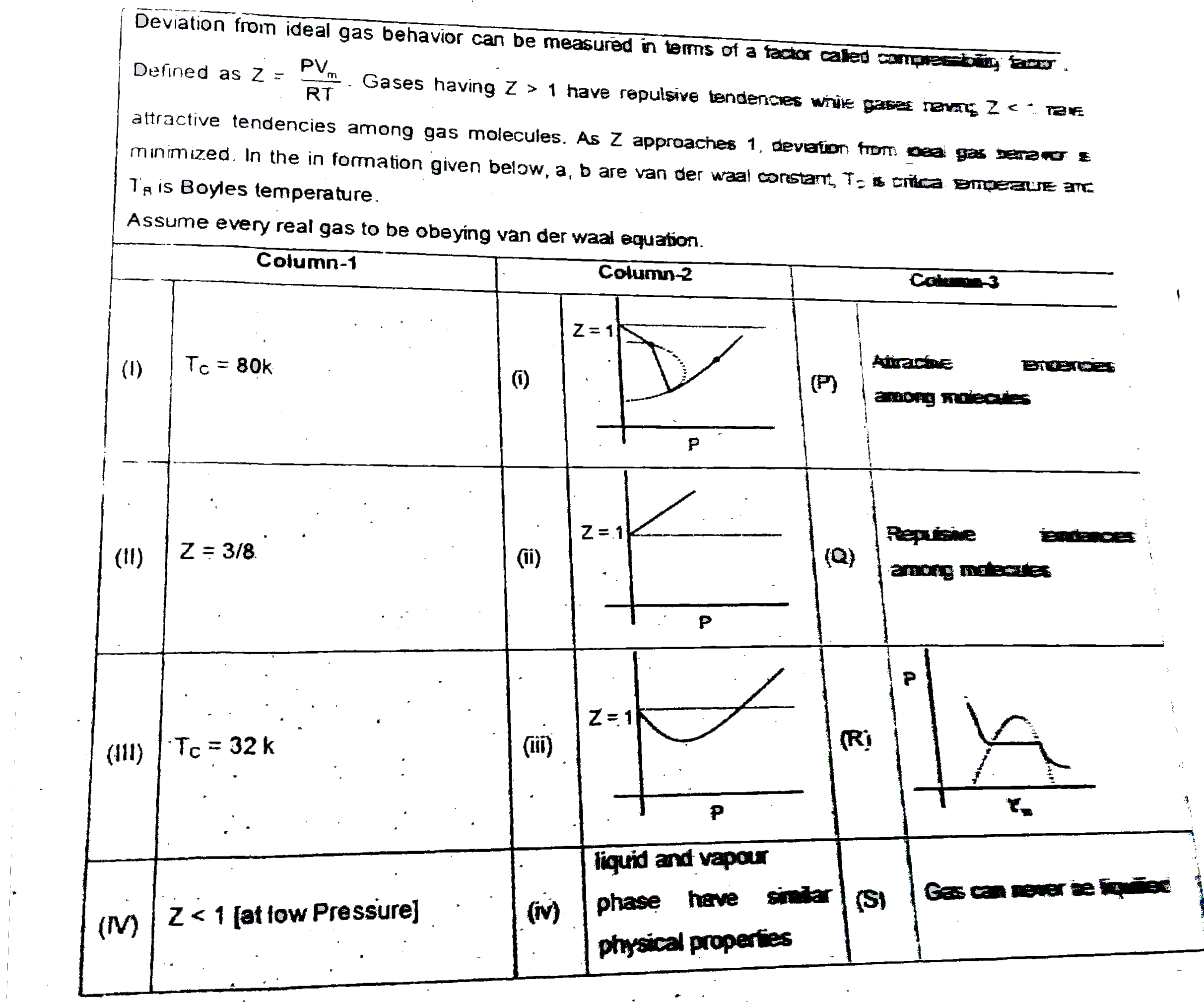What is critical temperature?
Step-by-Step Solution
1. Definition of Critical Temperature:
- Critical temperature is defined as the temperature above which a gas cannot be liquefied, regardless of the pressure applied.
2. Behavior of Gases:
- When a gas is cooled below its critical temperature, it can be converted into a liquid by increasing the pressure. This is because the kinetic energy of the gas molecules decreases, allowing intermolecular forces to pull them closer together, resulting in a liquid state.
3. Critical Point:
- The critical point is the specific combination of temperature and pressure at which the properties of the gas and liquid phases become indistinguishable. At this point, the substance is in a supercritical state.
4. Temperature and Pressure Relationship:
- Above the critical temperature, no amount of pressure will cause the gas to liquefy. This means that the gas remains in its gaseous state even if the pressure is significantly increased.
5. Conclusion:
- In summary, the critical temperature is a crucial parameter in understanding phase transitions between gas and liquid states. It signifies the limit beyond which a gas cannot be liquefied by pressure alone.
- Critical temperature is defined as the temperature above which a gas cannot be liquefied, regardless of the pressure applied.
- When a gas is cooled below its critical temperature, it can be converted into a liquid by increasing the pressure. This is because the kinetic energy of the gas molecules decreases, allowing intermolecular forces to pull them closer together, resulting in a liquid state.
- The critical point is the specific combination of temperature and pressure at which the properties of the gas and liquid phases become indistinguishable. At this point, the substance is in a supercritical state.
- Above the critical temperature, no amount of pressure will cause the gas to liquefy. This means that the gas remains in its gaseous state even if the pressure is significantly increased.
- In summary, the critical temperature is a crucial parameter in understanding phase transitions between gas and liquid states. It signifies the limit beyond which a gas cannot be liquefied by pressure alone.
Topper's Solved these Questions
- BOOK - PRADEEPCHAPTER - PROPERTIES OF BULK MATTEREXERCISE - Short Answer Questions162videos
PROPERTIES OF BULK MATTER
- BOOK - PRADEEPCHAPTER - PROPERTIES OF BULK MATTEREXERCISE - Long Answer questions33videos
PROPERTIES OF BULK MATTER
- BOOK - PRADEEPCHAPTER - PROPERTIES OF BULK MATTEREXERCISE - Curiosity Questions9videos
PROPERTIES OF BULK MATTER
- BOOK - PRADEEPCHAPTER - PHYSICAL WORLD AND MEASUREMENTEXERCISE - Competiton Focus Jee Medical Entrance18videos
PHYSICAL WORLD AND MEASUREMENT
- BOOK - PRADEEPCHAPTER - RAY OPTICSEXERCISE - Problem For Practice(a)25videos
RAY OPTICS
Similar Questions
Knowledge Check
- Question 1 - Select One

For a real gas x at its critical temperature the correct option is -A(II)(iv)(P)B(IV)(iv)(S)C(IV)(i)(S)D(II)(iii)(S) - Question 2 - Select One
At critical temperature:
Aliquid passes into gaseous state imperceptibly and continouslyBgas passes into liquid state imperceptibly and continouslyCsurface separating two phases disappearsDall of the above - Question 3 - Select One
At the critical temperature
Aliquid and vapour exist in equilibriumBvapour state does not exist at allCthe meniscus between liquid and vapour disappearsDthe vapour condense into solid
How is adsorption of a gas related to its critical temperature?
View SolutionAssertion. Menscus of a liquid disappears at critical temperature.
Reason. Density of a liquid and its gaseous phase become equal at the critical temperature.View SolutionAt the critical temperature , the substance exists as a
View SolutionThe gas with the highest critical temperature is
View Solution(A) Meniscus of a liquid disappears at the critical temperature.
(R) Density of liquid and its gaseous phase become equal at the critical temperature.View Solution

